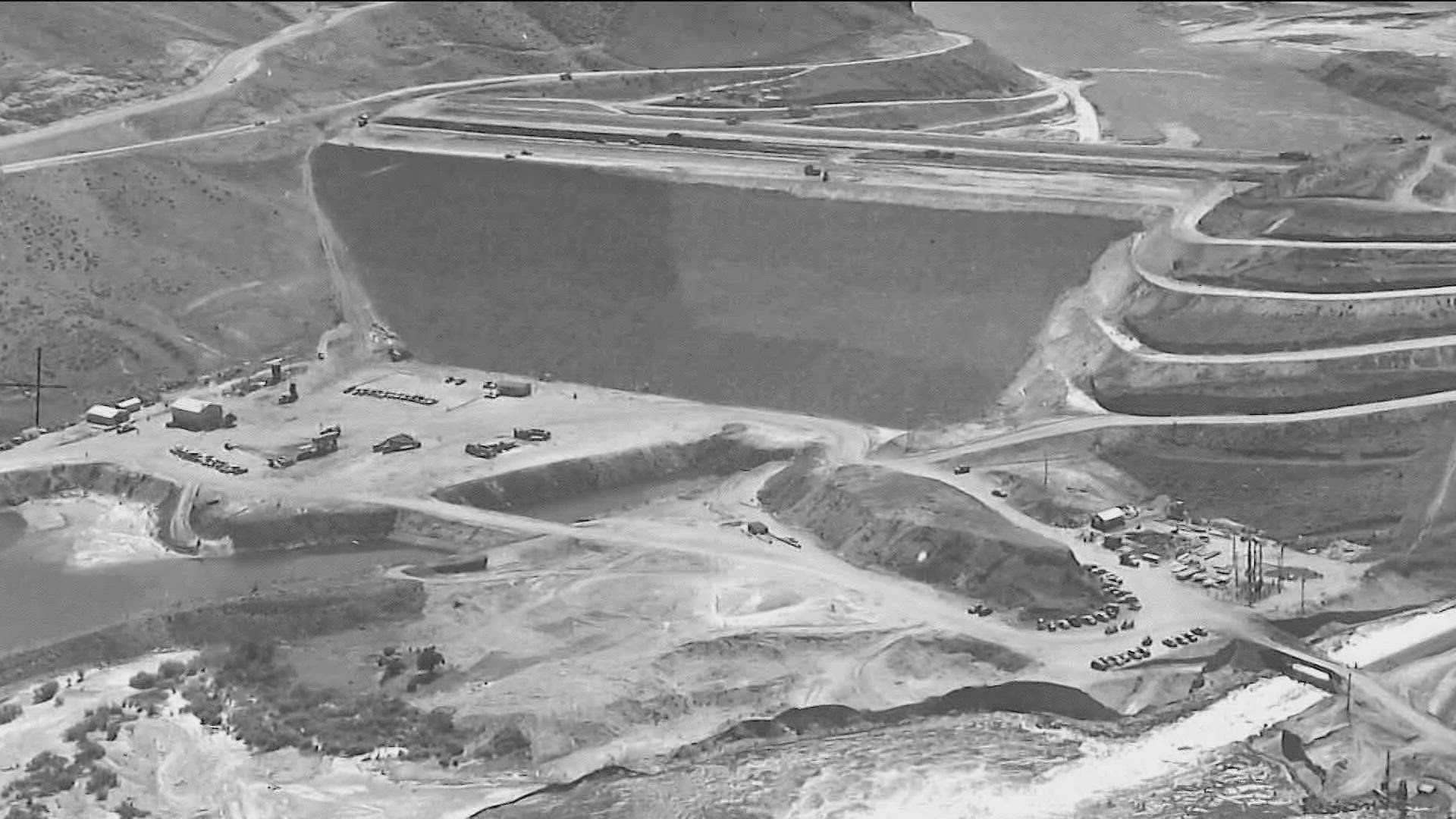BOISE, Idaho — The history of the stone steps on the face of the Lucky Peak Dam has kept people questioning their origin over the years.
Construction on the dam began in 1949 as a way of controlling flooding along the Boise River, and was funded by the Flood Control Act of 1946. At the time, the barrier was made up of rolled, packed dirt more than 250 feet above the streambed.
The dam was dedicated in June of 1955, and had a capacity of more than 260,000-acre feet of water. But how would the U.S. Army Corps of Engineers make sure that the dam was functioning properly? That is where the steps come in.
Maintenance workers use those ladders to conduct weekly and monthly maintenance inspections. The crews check pressure points in the walls; what are called piezometer wells.
These wells monitor the water table in specific areas of the dam, so the steps only need to go as far as the wells do. A formal inspection is also done every five years, with the last one completed in 2019.
These frequent checks seem to be working, however, as the 67-year-old dam is still holding up, despite the 6.5 magnitude quake that shook Idaho in 2020. The Army Corps of Engineers said the dam is solid and safe.
At the time of its construction, the Lucky Peak Dam cost the state roughly $19 million; that equates to more than $220 million in today's dollars.
In the dam's almost 70-year history, it has stopped an estimated $2.4 billion in flood damages since 1961.
Watch more Local News:
See the latest news from around the Treasure Valley and the Gem State in our YouTube playlist:

